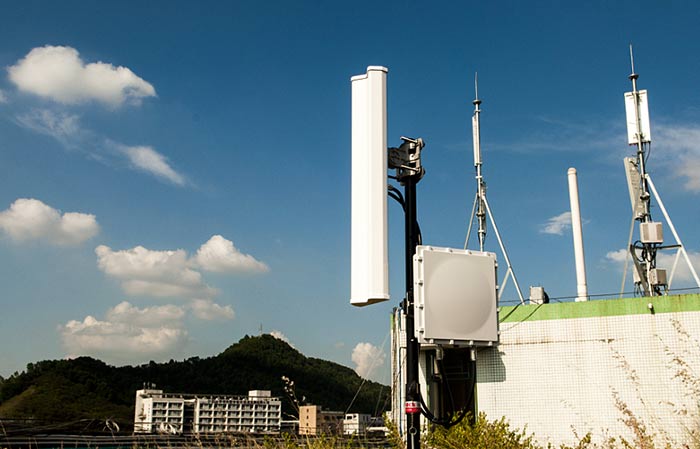The wireless transmission method is far more cost-effective than the way of laying lines, and the operation is simple. It is especially suitable for use across rivers, rivers, oil fields, mines, mining areas, factories, forests, villages, community streets, and electric power. Wireless video surveillance. Wireless bridges that are required for wireless engineering generally have two frequency bands that operate at 2.4G and 5.8G respectively. Many users do not know how to select these two devices and what is the difference between the two bands.
Both 2.4G and 5.8G are provided for wireless bridges as frequency bands. Today we will work with you to understand this issue.
How to choose 2.4G wireless bridge and 5.8G wireless bridge, what are the differences between the two?
1, the use of different wireless standards. Why they are called 2.4G wireless bridge and 5.8G wireless bridge because they use 2.4G and 5.8G respectively, because the two wireless bridges use different standards, so the transmission power of the two It is not the same.
2. In addition to being a transmission device, a 2.4G-band wireless bridge also has a function as a WIFI hotspot. If the wireless bridge is connected to the Internet, computers with wireless network cards and mobile terminals (such as mobile phones, ipads, etc.) can pass 2.4. G's wireless bridge is directly connected to the external network, while the 5.8G wireless bridge cannot do this. However, with the current popularity of 802.11ac technology, more and more 5.8G devices can also do WIFI coverage, but it is still relatively small compared to 2.4G.
3. The 5.8G wireless bridge has stronger anti-interference ability than the 2.4G wireless bridge, but 2.4G is more dominant in terms of penetration. Therefore, it is recommended that the use of 5.8G wireless bridges in a more complex urban environment can facilitate signal reception and transmission.
4, mentioned from the previous point, 2.4G than 5.8G penetrating and diffraction capabilities are better, so the use of 2.4G wireless bridge as a WIFI hotspot function can be established indoors, a wireless LAN, through the wireless terminal can be connected The network can also set a password to ensure the security and confidentiality of the wireless network.
5, due to the use of 2.4G band WIFI, microwave ovens, Bluetooth, many home wireless routers are using this band, so 2.4G is very easy to cause channel interference problems, and 5.8G band is not easy to cause interference!
6, 5.8G wireless bridge than the 2.4G wireless bridge farther than the transmission distance, the relative rain attenuation is relatively small, high stability, generally applicable to the field of long-distance transmission.
How to choose between 2.4G and 5.8G wireless bridge equipment?
The 2.4G and 5.8G wireless bridges can't arbitrarily say who is superior or not, just looking at the suitability of engineering applications. If you are covering or close to the bridge, you can use 2.4G products, such as elevator monitoring, wireless bridges and other scenic parks.
If you want a long-distance bridge or transmission, it is best to use 5.8G wireless bridge + directional antenna, the transmission distance is far, the frequency band is relatively clean, the rain attenuation is small, the diffraction ability is also better, such as forest fire prevention, oil field monitoring Such scenes will be used.
Shenzhen Shenfang Technology Co., Ltd. specializes in the R&D, production and sales of wireless products. The wireless digital bridges have a transmission distance of 1 to 100 kilometers. Both 2.4G and 5.8G are available. They are suitable for all kinds of inconvenient wiring environments. . In some special environments, there are also cases where wireless bridges of two frequency bands are mixed. For example, in a tunnel environment, two types of frequency wireless bridges are usually used staggeredly because of the tunneling effect of using the same frequency band.
Conveyor Rollers
Conveyor Rollers
Established in 1976 in China, JUXIN, are
considered as the first Conveyor and components: roller, frame, pulley
manufacturer in Hengshui, China. The rapid growth of the business in
China soon created the need for a distribution depot, therefore in 2007 a
new branch was put in place in Tianjin City The modern day JUXIN now
manufactures conveyor products to suit all supplies of mining, steel
plant, cement plant, quarry, crushing and screening equipment. Our
expertise and knowledge allows us to deliver fully on our promises of
providing quick answers to your enquiries, rapid service, high quality
products and above all, we are fully committed to be the best at what we
do Service Agents are also located in: UK, South Africa, Kenya,
Indonesia, Thailand, Kazakhstan All products are underpinned by
unmatched customer service and prompt, reliable delivery. Our internal
quality systems are designed to ensure that all orders are handled
quickly and are manufactured to the ultimate quality standards. Several
checking processes are in place prior to orders being released from the
factory. Many tightly controlled inspections occur during the production
processed.

